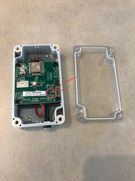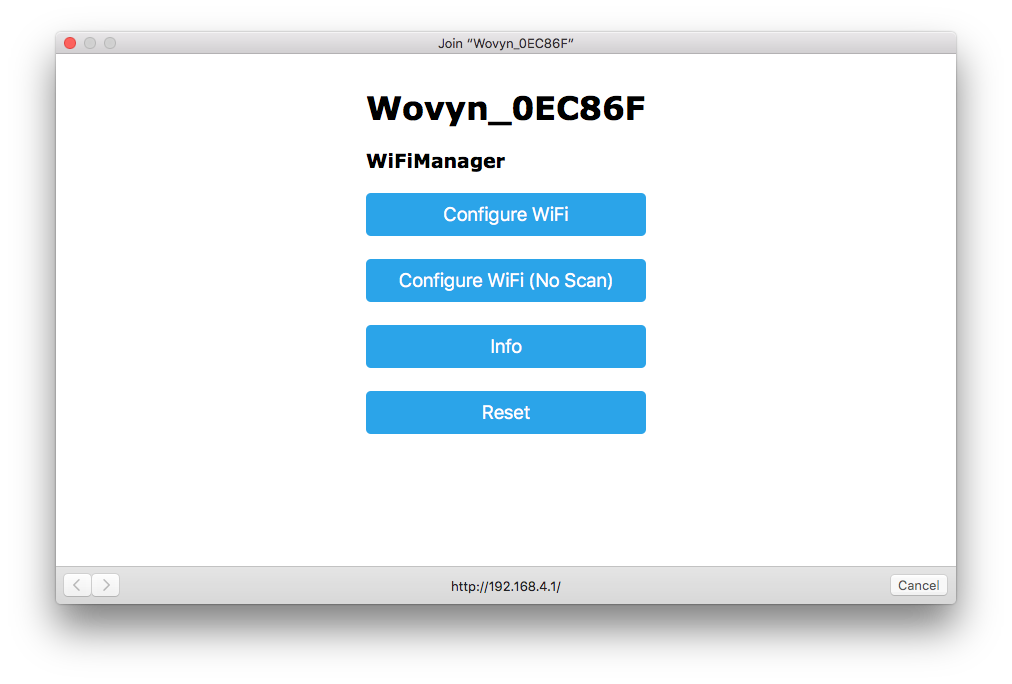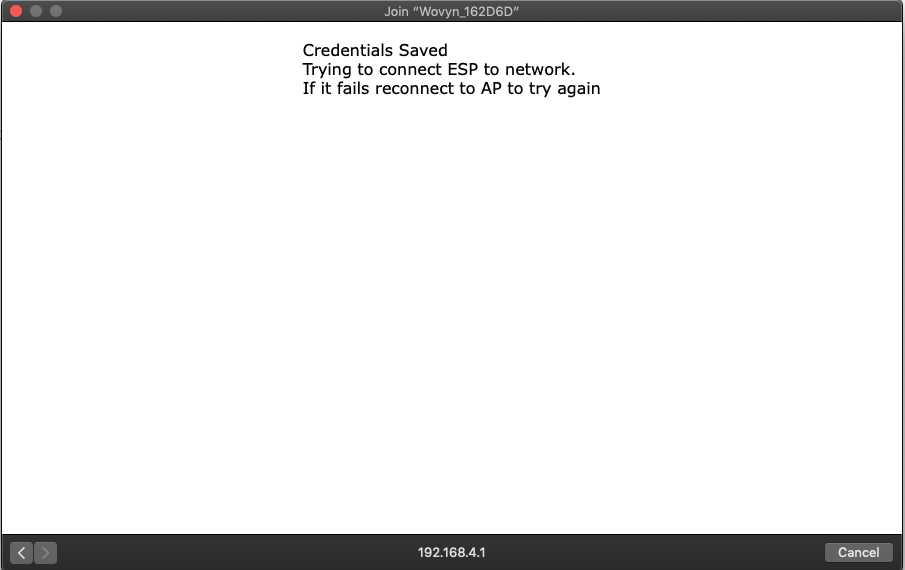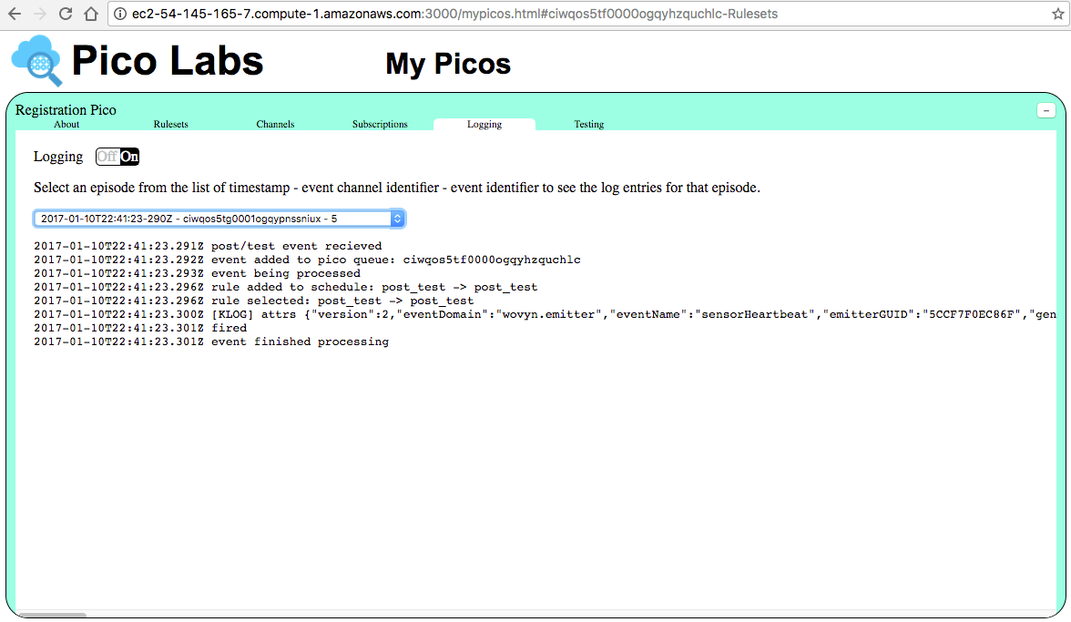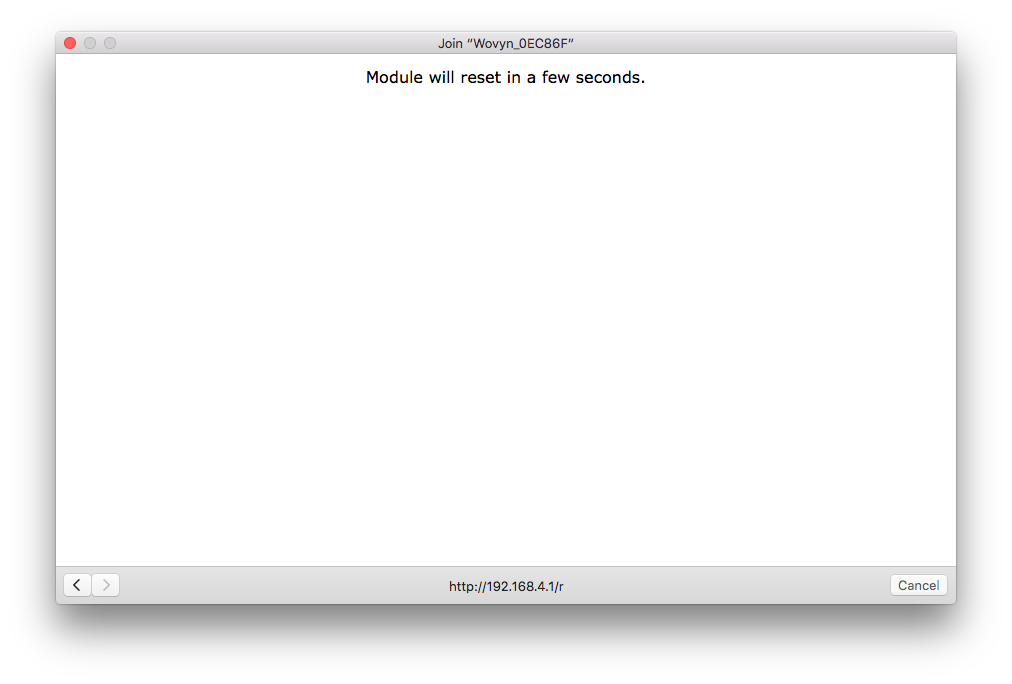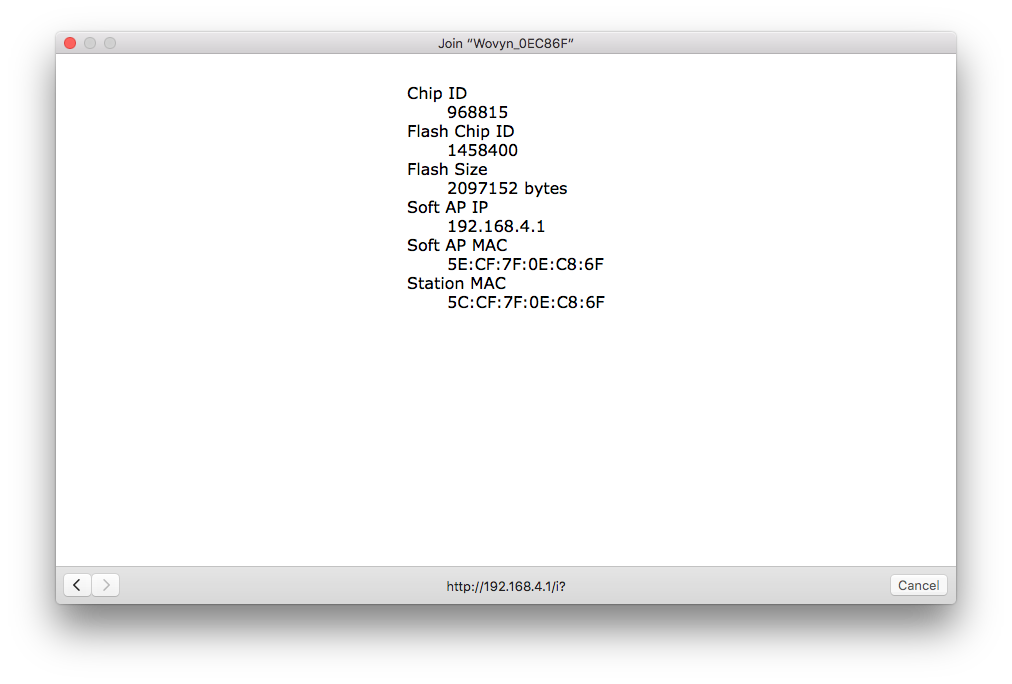Connecting a Wovyn sensor to the Internet of Things using a Pico and KRL.
Opening up the sensor, we can see model, serial, and version numbers. The small black chip is the temperature sensor.
Step-by-step guide
Configuring the sensor to send its event:
To configure the sensor's endpoint, we must turn the sensor into a wifi hotspot and connect to it. Before doing this, find and write down your ip address, pico engine port number, pico ECI, and the domain/type of the event you would like to send (e.g. wovyn/heartbeat). This is a Sky Event API URL and you should be prepared with it before you move on, recommended that you have it tested and ready in your copy buffer.
To turn the sensor into a hotspot, interrupt the power by disconnecting the cable. After a few seconds, replug the power cable and press the white button on the board. You should see the little blue light rapidly flash.
Select the WiFi hotspot using your personal computer. In our case, its advertised name is Wovyn_2C2025. After a brief moment, the capture screen appears. See step 4 if it does not automatically appear.
On some operating systems, the capture screen does not appear automatically, and you'll need to open a browser, navigate somewhere (doesn't matter where), and the capture will open therein.
If you click on the button "Configure WiFi", the device will scan for WiFi hotspots and present a list, from which you can select one. Select the network which the device should use to communicate to the Internet. If you know the SSID, you could instead choose the button "Configure WiFi (No Scan)", and enter the SSID manually. You will see these prompts:
Enter "http://<yourIPaddress>:<yourPort>/sky/event/<yourECI>/<eventID>/<domain>/<type> under endpoint URI
If you do not hit save, but rather hit cancel, then the device will remain as a hotspot for a little while and you may wonder why it is not sending any events.
The complete path for our experimental "sky/event" was set up as "/sky/event/ECI/EID/wovyn/heartbeat", with "ECI" replaced with an actual event channel identifier of a pico running on that engine. Note that the leading slash is necessary in the path. With all the information provided, click the "save" button. You may find it useful to review the Sky Event API page.
The device responds with this acknowledgement page. The page will close automatically after a few seconds.
Of course the pico identified by the ECI will need a ruleset to receive the event. This is the KRL code that we used initially.
ruleset post_test { meta { shares __testing } global { __testing = { "queries": [ { "name": "__testing" } ], "events": [ { "domain": "post", "type": "test", "attrs": [ "temp", "baro" ] } ] } } rule post_test { select when post test pre { never_used = event:attrs().klog("attrs") } } }The rule selected does nothing but log the event attributes. Notice that the ruleset shares a test harness which allows us to easily send a test event from the "Testing" tab of the "My Picos" page.
We used the "Logging" tab to see what happens when the device sends an event.
Notice that several attributes are sent by the device. The first of these are "version", "eventDomain", "eventName", and "emitterGUID". The horizontal scrollbar indicates that there is much more. Capturing and re-formatting all of it, we see that the remaining attributes are named "genericThing", "specificThing", and "property". The following data structure is current as of 1/21/18.{ "emitterGUID":"5CCF7F2BD537", "eventDomain":"wovyn.emitter", "eventName":"sensorHeartbeat", "genericThing":{ "typeId":"2.1.2", "typeName":"generic.simple.temperature", "healthPercent":56.89, "heartbeatSeconds":10, "data":{ "temperature":[ { "name":"ambient temperature", "transducerGUID":"28E3A5680900008D", "units":"degrees", "temperatureF":75.31, "temperatureC":24.06 } ] } }, "property":{ "name":"Wovyn_2BD537", "description":"Temp1000", "location":{ "description":"Timbuktu", "imageURL":"http://www.wovyn.com/assets/img/wovyn-logo-small.png", "latitude":"16.77078", "longitude":"-3.00819" } }, "specificThing":{ "make":"Wovyn ESProto", "model":"Temp1000", "typeId":"1.1.2.2.1000", "typeName":"enterprise.wovyn.esproto.wtemp.1000", "thingGUID":"5CCF7F2BD537.1", "firmwareVersion":"Wovyn-WTEMP1000-1.14", "transducer":[ { "name":"Maxim DS18B20 Digital Thermometer", "transducerGUID":"28E3A5680900008D", "transducerType":"Maxim Integrated.DS18B20", "units":"degrees", "temperatureC":24.06 } ], "battery":{ "maximumVoltage":3.6, "minimumVoltage":2.7, "currentVoltage":3.21 } }, "version":2 }We also tried out the "Reset" option, which apparently forgets only the WiFi hotspot the device uses to send its heartbeat events, but retains the endpoint information.
Finally, the "Info" button presents some internal information.
